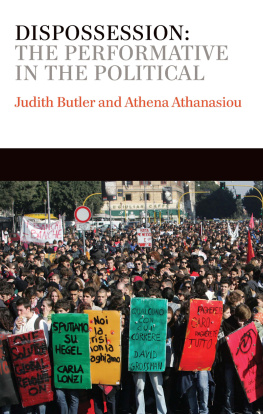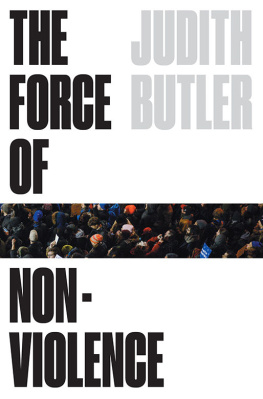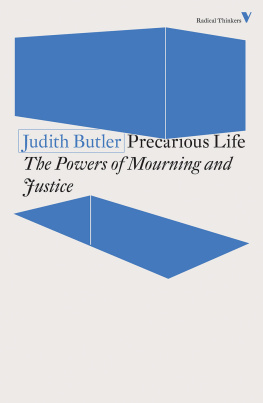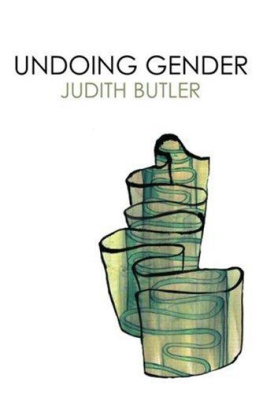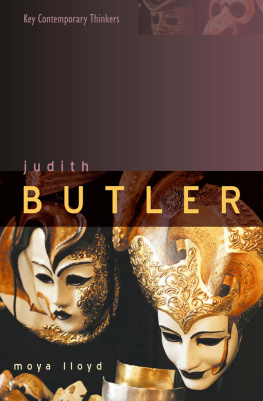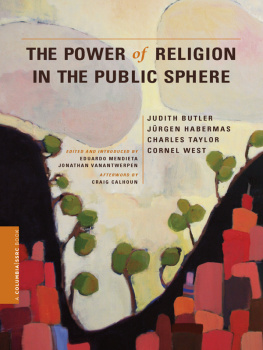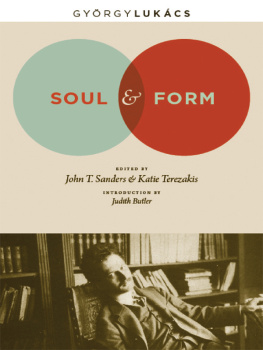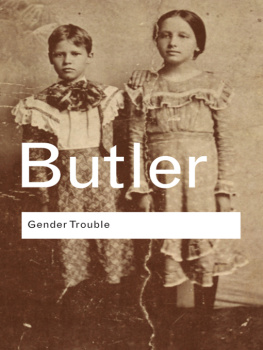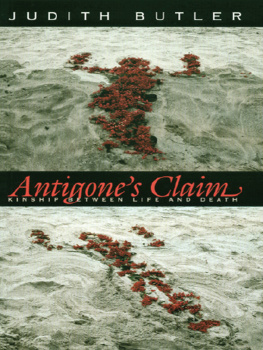Bodies That Matter
Extending the brilliant style of interrogation that made her 1990 book G ender Trouble: Feminism and the Subversion of Identity a landmark of gender theory/queer theory, Butler here continues to refi ne our understandings of the complexly performative character of sexuality and gender and to trouble our assumptions about the inherent subversiveness of dissident sexualities. indispensable reading across the wide range of concerns that queer theory is currently addressing
Artforum
What the implications/limitations of sexing are and how the process works comprise the content of this strikingly perceptive book. Butler has written a most signifi cant and provocative work that addresses issues of immediate social concern.
The Boston Book Review
A brilliant and original analysis.
Drucilla Cornell, Rutgers University, USA
a classic.
Elizabeth Grosz

Routledge Classics contains the very best of Routledge publishing over the past century or so, books that have, by popular consent, become established as classics in their field. Drawing on a fantastic heritage of innovative writing published by Routledge and its associated imprints, this series makes available in attractive, affordable form some of the most important works of modern times.
For a complete list of titles visit
www.routledge.com/classics
A CKNOWLEDGMENTS
I thank Maureen MacGrogan once again for soliciting and sustaining this book with her characteristic generosity and intelligence. My enduring appreciation also goes to Joan W. Scott for the incisive way she grasps the project first, for her excellent reading of the entire text, and for her fine friendship. I have been very lucky to have excellent readers in Drucilla Cornell, Elizabeth Grosz, and Margaret Whitford; their criticisms of earlier drafts were enormously useful. I thank as well my seminar at Cornell University for engaging conversations in the fall of 1991 when this project began to take shape. The production staff at Routledge was also enormously helpful throughout this process. A number of colleagues and students have helped in thinking about the text, sometimes reading drafts and offering excellent criticism or helping with the production of the manuscript: Elizabeth Abel, Bice Benvenuto, Teresa Brennan, Alexandra Chasin, William Connolly, Karin Cope, Peter Euben, Carla Freccero, Nelly Furman, Jonathan Goldberg, Simon Goldhill, Donna Haraway, Susan Harding, Gail Hershatter, Morris Kaplan, Debra Keates, Biddy Martin, Bridget McDonald, Mandy Merck, Michael Moon, Naomi Schor, Eve Kosofsky Sedgwick, Josh Shapiro, James Swenson, Jen Thomas, Tim Walters, Dave Wittenberg, and Elizabeth Weed. I thank Eloise Moore Agger, for her disarming ways; Linda L. Anderson, Ins Azar, Fran Bartkowski, Robert Gooding-Williams, Jeff Nunokawa, Mary Poovey, and Eszti Votaw for their indispensable friendship; and Wendy Brown for engaging my thinking thoroughly and critically, and for the careful persuasion which helped me to see how revisions of some of my earlier positions might better suit and clarify my aims.
This project was assisted through various highly appreciated forms of institutional support. Three of these chapters were presented in shorter versions as the Beckman Lectures for the Department of English at the University of California at Berkeley during the spring of 1992. I am very glad to have had such an opportunity to learn from colleagues and students at UC-Berkeley. As a senior fellow at the Society for the Humanities at Cornell University in the fall of 1991, I gained invaluable commentary on the project from faculty and students alike. I thank Jonathan Culler for supporting my research in various ways, including his invitation to the Humanities Research Institute at the University of California at Irvine in April of 1992.
My students at Johns Hopkins University have been invaluable interlocutors. And my colleagues at the Humanities Center at Johns Hopkins University not only supported my research, but provided a rich, interdisciplinary intellectual life for which I am most grateful.
This book is written in the memory of those friends and family I have lost in recent years: my father, Dan Butler; my grandmother, Helen Greenberger Lefkowich; my friends, Linda Singer and Kathy Natanson. And it is written for the company of colleagues who inform, sustain, and receive this labor, such as it is.
BODIES THAT MATTER
If I understand deconstruction, deconstruction is not an exposure of error, certainly not other peoples error. The critique in deconstruction, the most serious critique in deconstruction, is the critique of something that is extremely useful, something without which we cannot do anything.
Gayatri Chakravorty Spivak, In a Word, interview with Ellen Rooney
the necessity of reopening the figures of philosophical discourse One way is to interrogate the conditions under which systematicity itself is possible: what the coherence of the discursive utterance conceals of the conditions under which it is produced, whatever it may say about these conditions in discourse. For example the matter from which the speaking subject draws nourishment in order to produce itself, to reproduce itself; the scenography that makes representation feasible, representation as defined in philosophy, that is, the architectonics of its theatre, its framing in space-time, its geometric organization, its props, its actors, their respective positions, their dialogues, indeed their tragic relations, without over-looking the mirror , most often hidden, that allows the logos, the subject, to reduplicate itself, to reflect itself by itself. All these are interventions on the scene; they ensure its coherence so long as they remain uninterpreted. Thus they have to be reenacted, in each figure of discourse away from its mooring in the value of presence. For each philosopher, beginning with those whose names define some age in the history of philosophy, we have to point out how the break with material contiguity is made (il faut reprer comment sopre la coupure davec la contiguit materielle), how the system is put together, how the specular economy works.
Luce Irigaray, The Power of Discourse
Within some quarters of feminist theory in recent years, there have been calls to retrieve the body from what is often characterized as the linguistic idealism of poststructuralism. In another quarter, philosopher Gianni Vattimo has argued that poststructuralism, understood as textual play, marks the dissolution of matter as a contemporary category. And it is this lost matter, he argues, which must now be reformulated in order for poststructuralism to give way to a project of greater ethical and political value. The terms of these debates are difficult and unstable ones, for it is difficult to know in either case who or what is designated by the term poststructuralism, and perhaps even more difficult to know what to retrieve under the sign of the body. And yet these two signifiers have for some feminists and critical theorists seemed fundamentally antagonistic. One hears warnings like the following: If everything is discourse, what happens to the body? If everything is a text, what about violence and bodily injury? Does anything matter in or for poststructuralism?
It has seemed to many, I think, that in order for feminism to proceed as a critical practice, it must ground itself in the sexed specificity of the female body. Even as the category of sex is always reinscribed as gender, that sex must still be presumed as the irreducible point of departure for the various cultural constructions it has come to bear. And this presumption of the material irreducibility of sex has seemed to ground and to authorize feminist epistemologies and ethics, as well as gendered analyses of various kinds. In an effort to displace the terms of this debate, I want to ask how and why materiality has become a sign of irreducibility, that is, how is it that the materiality of sex is understood as that which only bears cultural constructions and, therefore, cannot be a construction? What is the status of this exclusion? Is materiality a site or surface that is excluded from the process of construction, as that through which and on which construction works? Is this perhaps an enabling or constitutive exclusion, one without which construction cannot operate? What occupies this site of unconstructed materiality? And what kinds of constructions are foreclosed through the figuring of this site as outside or beneath construction itself?


